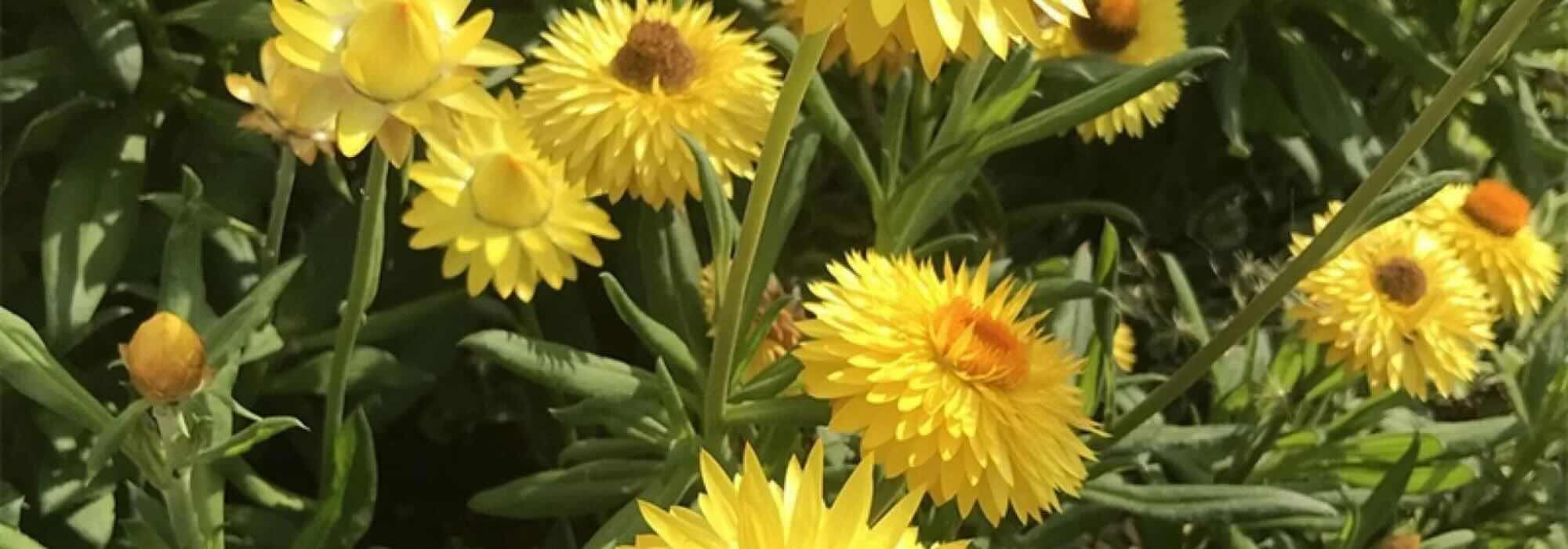
Dry Garden: The Most Drought-Resistant Annual Plants
Flowers without the hassle
Contents
Dry summers and water restrictions are becoming a reality for many gardeners. Fortunately, it is entirely possible to maintain a flowering, lively and colourful space without increasing watering. Drought-resistant annual flowers offer an ideal solution: they grow quickly, require little maintenance and thrive even in challenging conditions. In borders, planters or at the heart of the vegetable garden, these plants adapt to the sunniest exposures and driest soils. In this article, discover the hardiest species, the right techniques to grow them without wasting water, and composition ideas for a garden that’s as beautiful as it is sustainable.
Understanding drought-resistant plants
With increasingly hot and dry summers, many gardeners are looking for plants that can withstand water shortages without losing their vibrancy. Some species prove surprisingly resilient. But what makes a plant truly drought-resistant?
Over time, these plants have developed their own unique adaptation mechanisms. Their foliage, for example, is often thicker, covered with fine hairs or a waxy layer. These characteristics help reduce transpiration and retain moisture for longer. Other plants have deep roots that draw water from lower soil layers, or rapid growth that allows them to complete their life cycle before the heat becomes too intense.
Drought-resistant plants also practise remarkable frugality: they don’t waste the water they absorb. By limiting their growth to the bare essentials or slowing their activity during extreme heat, they weather dry spells effortlessly.
Incorporating these plants into your garden or balcony is an aesthetic, practical and ecological choice. Not only do they require less watering (reducing maintenance), but they also help conserve an increasingly precious resource: water.
They are invaluable allies in creating a more resilient garden, one that adapts to new climatic realities without sacrificing beauty or plant diversity.
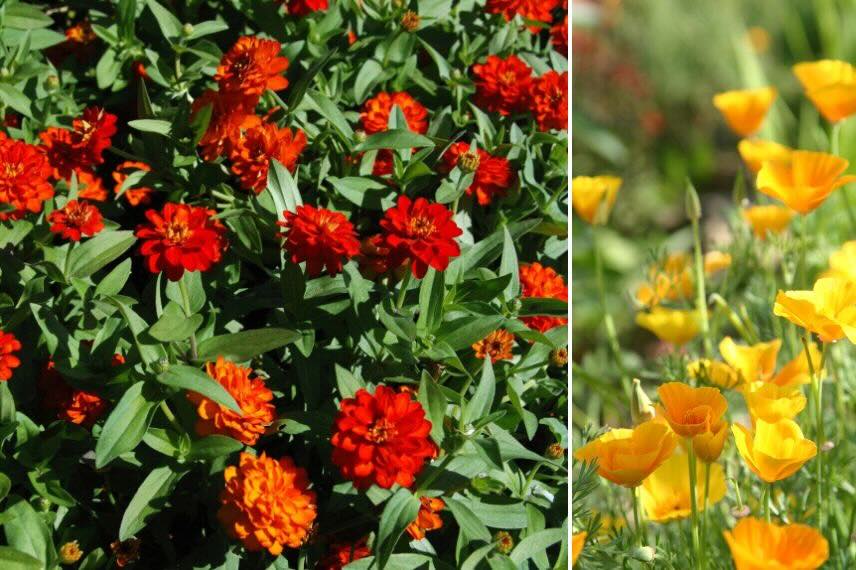
Zinnia and Eschscholtzia: two highly drought-resistant annuals
Why choose annuals?
When it comes to easy-going flowers that can brighten up a garden or balcony in no time, annuals take the lead. These are plants that complete their entire life cycle, from seed to flowering, then to seed production, in just one season. This gives them a considerable advantage in situations where the climate becomes unpredictable or arid.
Annuals have the ability to grow quickly, sometimes in just a few weeks, allowing them to take advantage of favourable weather windows. Even in slightly poor or dry soil, some establish themselves rapidly, flower abundantly, and bring colour without requiring too much effort. It’s an ideal solution for those who wish to brighten up a space without spending too much time or water.
Another advantage: diversity. There is a wide variety of annuals with very different shapes, heights, colours, and textures. This allows for creating varied atmospheres from one year to the next, experimenting, changing, and adapting choices to weather conditions or current preferences.
Finally, in a resilient garden, annuals perfectly complement perennials. While the latter establish themselves for the long term, annuals can fill gaps, energise a flowerbed, or simply offer a temporary solution while the rest of the garden takes shape. And in regions where drought is becoming the norm, relying on heat-resistant annuals helps maintain a flowering space, even when rain is slow to arrive.
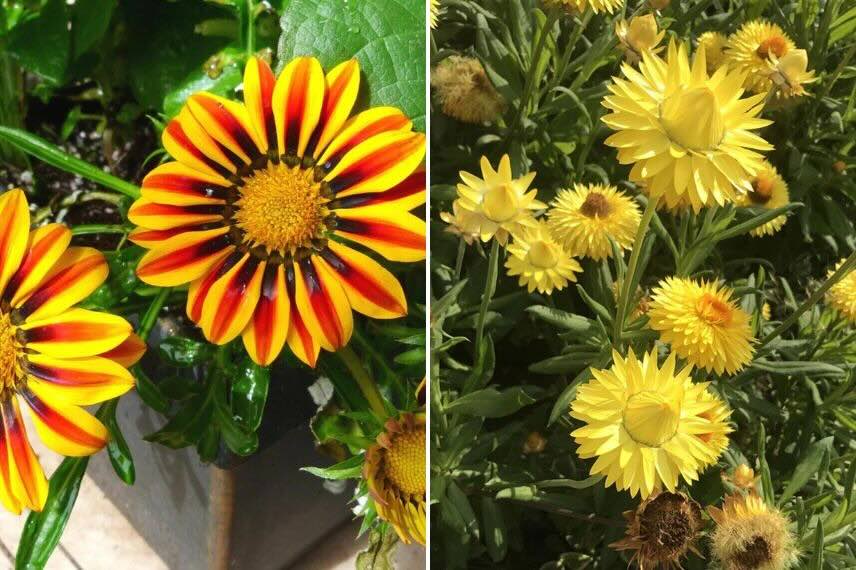
Bicolour Gazanias with contrasting flowers (‘Big Kiss’) and Bractanthea Granvia ‘Gold’
Top 7 Annuals That Withstand Drought Like Champions
Some annuals don’t just survive under the scorching sun – they thrive in it. Thanks to their adaptability, these plants withstand infrequent watering while offering generous flowering. Here’s a selection of seven particularly robust annuals, perfect for dry gardens or south-facing balconies.
Zinnia
The zinnia is a reliable choice for hot summers. Native to Mexico, it loves sunshine and tolerates drought well once established. It comes in a multitude of bright colours, with single or double flowers, and blooms until the first frosts.
Ammi majus or Ammi visnaga
Often confused with wild carrot, ammis produce large, airy white umbels, perfect for lightening up a dry border. They grow well in poor soils and require little water. Their elegant silhouette pairs beautifully with other annuals or drought-tolerant perennials.
Purslane
Ornamental annual purslane or Portulaca, such as ‘Campino Twist Pink’ or ‘Pazzaz Nano Yellow Twist’, often used as ground cover, is particularly suited to very dry conditions. Its fleshy foliage stores water, allowing it to withstand infrequent watering. Its small colourful flowers open in sunlight, creating a bright carpet perfect for pots or window boxes.
Gazania
The gazania is another star of dry gardens. Its vibrant flowers, in solid or contrasting bicolour shades, open in sunlight and close at night. This plant loves heat, full sun and well-drained soil. It’s ideal for rockeries or containers.
California Poppy
The California poppy, or Eschscholtzia, is a champion of self-sufficiency. Well adapted to poor, dry soils, this plant produces cup-shaped flowers in warm hues ranging from yellow to red. Once established, it practically looks after itself.
Australian Strawflower
The Bracteantha or Australian Strawflower is a hardy annual that loves sun and dry soils. Its papery flowers in vibrant colours (yellow, orange, pink, red) are also beautiful in dried arrangements. Once established, it requires very little water.
Pot Marigold
The Pot Marigold or Calendula is both decorative and useful. Easy to grow, it thrives even in dry soil, provided it receives some watering when first planted. It flowers abundantly and even has insect-repellent properties.
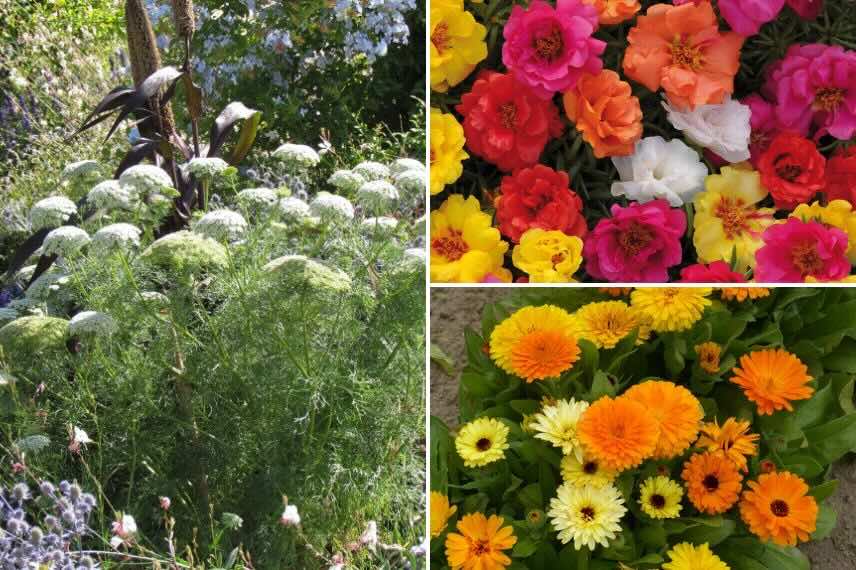
White umbel Ammis, ‘Sundial’ purslane and mixed Calendula
Read also
10 hardy plants for an exotic dry gardenTips for successfully growing your annuals without wasting water
Getting it right from the start: sowing and planting at the right time
The success of drought-resistant annuals begins at planting. It’s best to sow or plant after good rainfall, or during cooler parts of the day such as morning or late afternoon. This reduces water stress and helps young plants establish their root systems better. A generous watering at planting time is important, but afterwards, it’s better to space out watering to encourage roots to seek moisture deeper in the soil.
Mulch: an essential ally
Covering the soil around plants with mulch helps retain moisture, reduces watering needs and protects roots from temperature fluctuations. Several materials work well: straw, dried grass clippings, wood chips, dead leaves or decorative gravel. This simple technique makes a real difference, especially in summer.
The right soil for self-sufficient plants
Drought-resistant plants generally dislike heavy, waterlogged soils. Well-drained soil is essential to prevent water pooling on the surface. A light application of compost or sand, depending on your soil structure, helps improve texture and encourages deeper root growth where moisture remains available longer.
Success with annuals in pots or containers
For balconies and terraces, the same principles apply. Choose sufficiently deep pots with effective drainage holes. Good potting mix blended with some sand or gravel improves water retention without excess. Surface mulching is just as useful in containers as in open ground. Grouping several pots together creates a shadier, cooler microclimate.
Grouping annuals intelligently according to their needs
A well-planned garden groups plants with similar requirements together. This allows tailored watering and prevents overwatering drought-tolerant plants simply because they share a bed with thirstier varieties. This planting logic makes maintenance easier and reduces mistakes.
- Subscribe!
- Contents
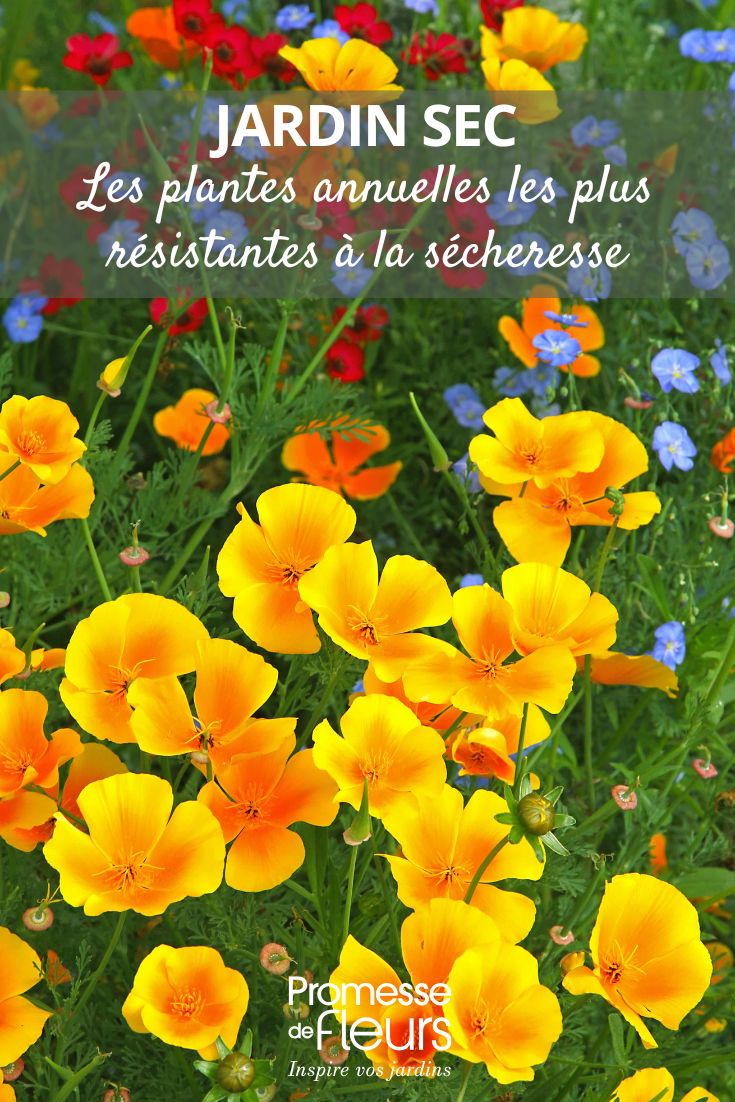































Comments